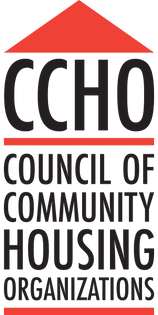Proposition E Ties Office Development to Affordable Housing Production in SF
If you don’t build enough affordable housing, then you can’t build more offices.
That’s a very simple interpretation of Proposition E, which appears on the March primary ballot in San Francisco. But it gets at what the measure’s sponsor wants to do — offer a stick instead of the carrot.
"I would call it more of an incentive to ensure that everybody from developers to city government are prioritizing affordable housing as we've never done before,” said Jon Jacobo, director of engagement and public policy at the Tenants and Owners Development Corporation (Todco), the affordable housing manager that put Proposition E on the ballot.
Officially named the San Francisco Balanced Development Act, it sets a goal of producing 2,042 new housing units per year for low-to-moderate income households in the city, based on a target established by a regional planning agency. Under the measure, if San Francisco doesn’t meet that goal, the amount of new office space approved would be limited by the same percentage the city came in short on housing production.
If, for example, the city produced 1,532 new affordable units in one year, missing its housing target by 25%, it would also have to reduce office development by 25%, according to an economic impact report from the San Francisco Controller’s Office.
And based on recent history, the measure would more than likely dampen new office construction: In the past decade, San Francisco has built an average of just 712 affordable housing units per year — or 35% of the target — according to the report.
There is, however, a caveat in the measure that allows some projects to bypass those restrictions if their developers promise to include a certain amount of affordable housing.
With the backing of a coalition of progressive affordable housing developers and advocacy groups, including the Council of Community Housing Organizations and the San Francisco Tenants Union, Todco has raised about $407,000 in support of Proposition E.
Proponents of it have long criticized city officials for prioritizing jobs and office development over affordable housing production, which they say increases demand for housing, inflates prices and displaces low-income residents.
"We need to take a very serious look at how we’re growing and what we are putting our resources behind," said Jacobo, who also sits on the San Francisco Building Inspection Commission.
But critics argue the measure lacks adequate incentives and does not actually require the city to build more affordable housing, aside from the threat of limiting office development.
Proposition E opponents — including San Francisco Mayor London Breed and the city's Chamber of Commerce — warn of rising office rents that could displace small businesses and nonprofits, while slowing economic and job growth.
"I think the premise of Prop. E is flawed," said Nick Josefowitz, director of policy at SPUR, an urban planning advocacy group. "The way to deliver more affordable housing for working San Franciscans is to make it easier to build."
The measure would actually reduce funding for affordable housing, Josefowitz said, pointing to the one-time square footage fee that office developers pay in support of new affordable housing construction.
That argument is bolstered by the Controller's Office report, which concludes that "the proposed measure is likely to lead to higher office rents, reduced tax revenue, reduced incomes and reduced employment across the city's economy."
Nevertheless, an October poll found that 56% of likely San Francisco voters would support a measure like Proposition E.
Developers have largely remained quiet in the debate, likely due in part to a grandfather provision under the measure that would allow several office projects already in the pipeline to proceed.
San Francisco already limits office development through Proposition M, passed by voters in 1986, which caps the amount of new office space approved for large projects each year at 875,00 square feet. A separate pool is set aside for small office projects.
Proposition M was spurred in reaction to the building boom of the 1960s and 1970s that gave rise to San Francisco’s skyline. The measure's supporters rallied to stop what they called the "Manhattanization" of downtown that blocked bay views, cast shadows and attracted hordes of commuting office workers.
"High rises mean high rents," read one pamphlet in support of the measure at the time. Much like today, a growing chorus of residents in the 1980s complained of evictions, competition for affordable housing, crowded Muni buses and small businesses being pushed out by big development.
But Proposition M never really posed a threat to limiting office development until last year, when San Francisco started approving taller buildings in the Transbay and Central SoMa districts.
If passed by a majority of voters, Proposition E would add another potential limit to that development.
